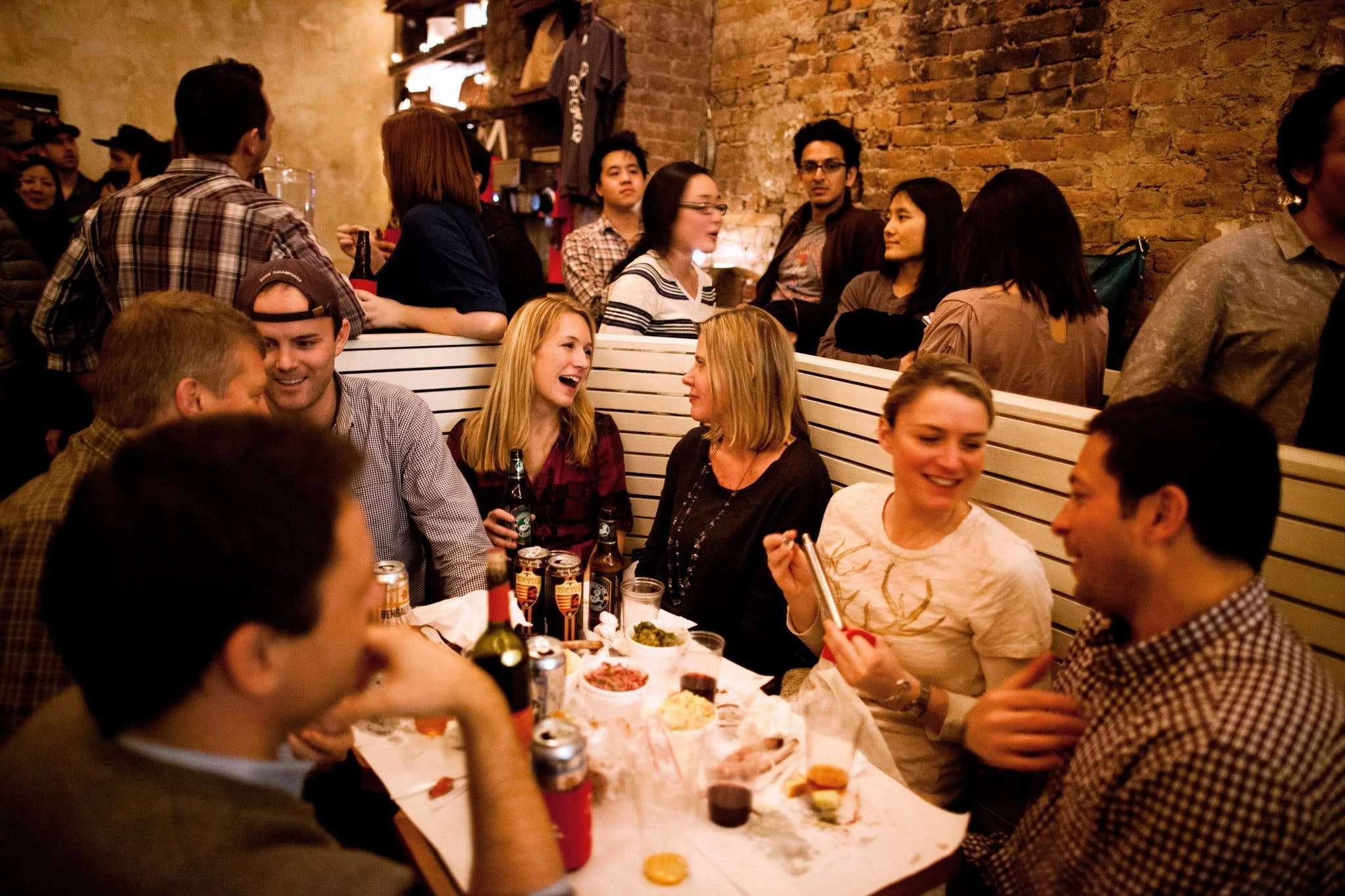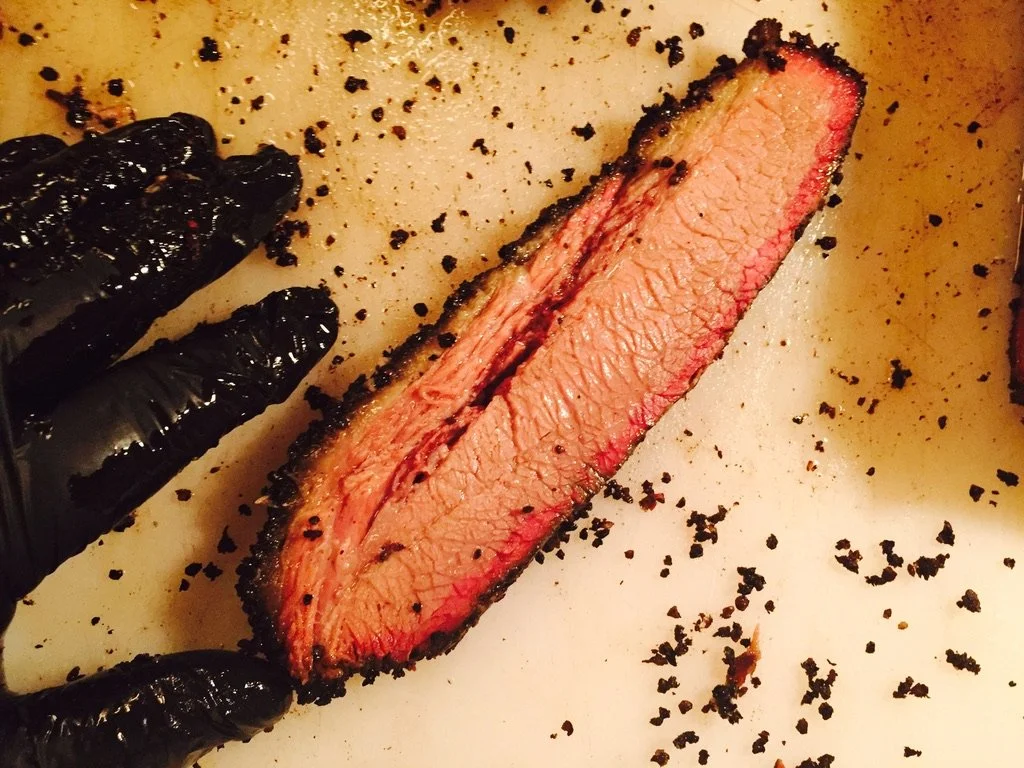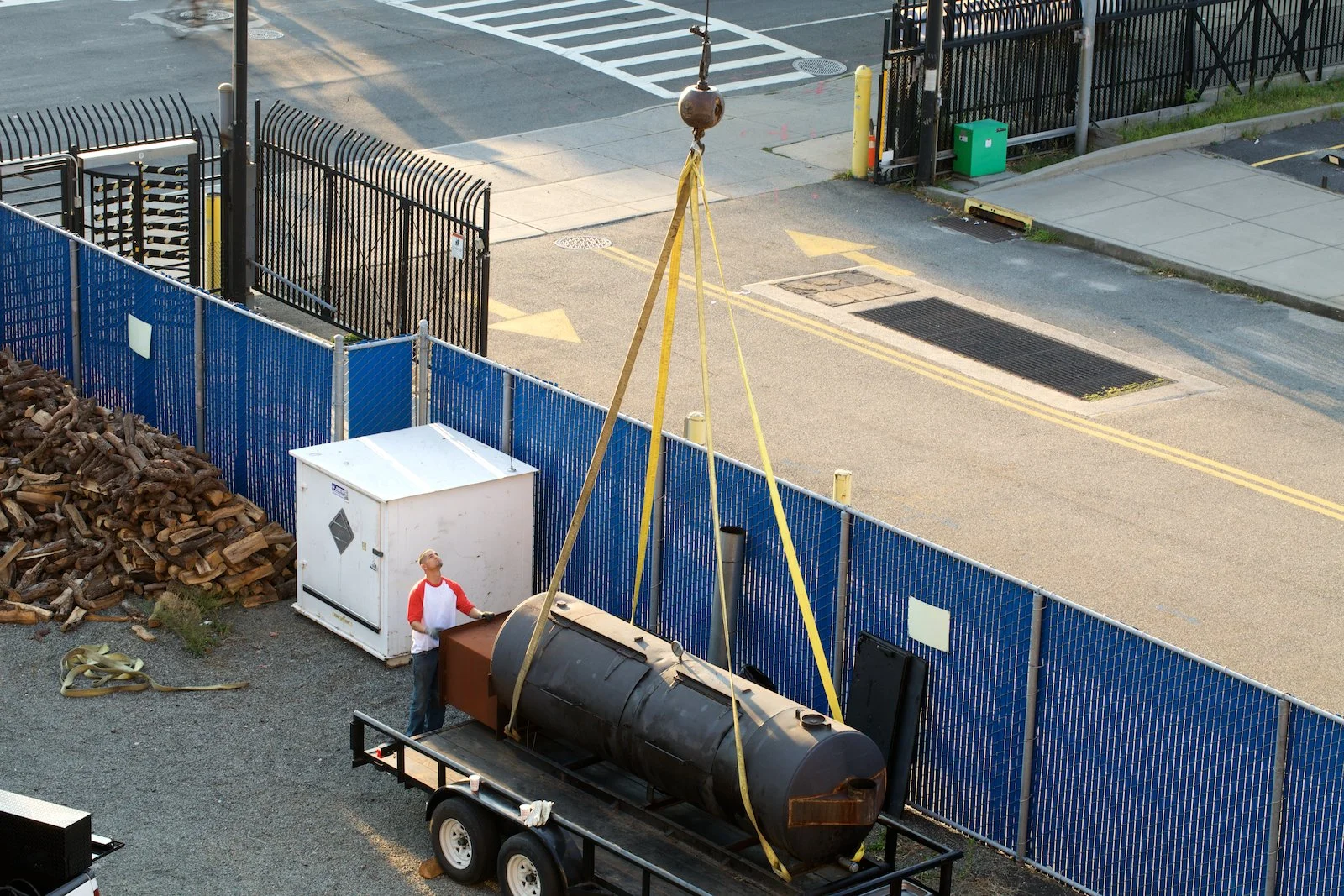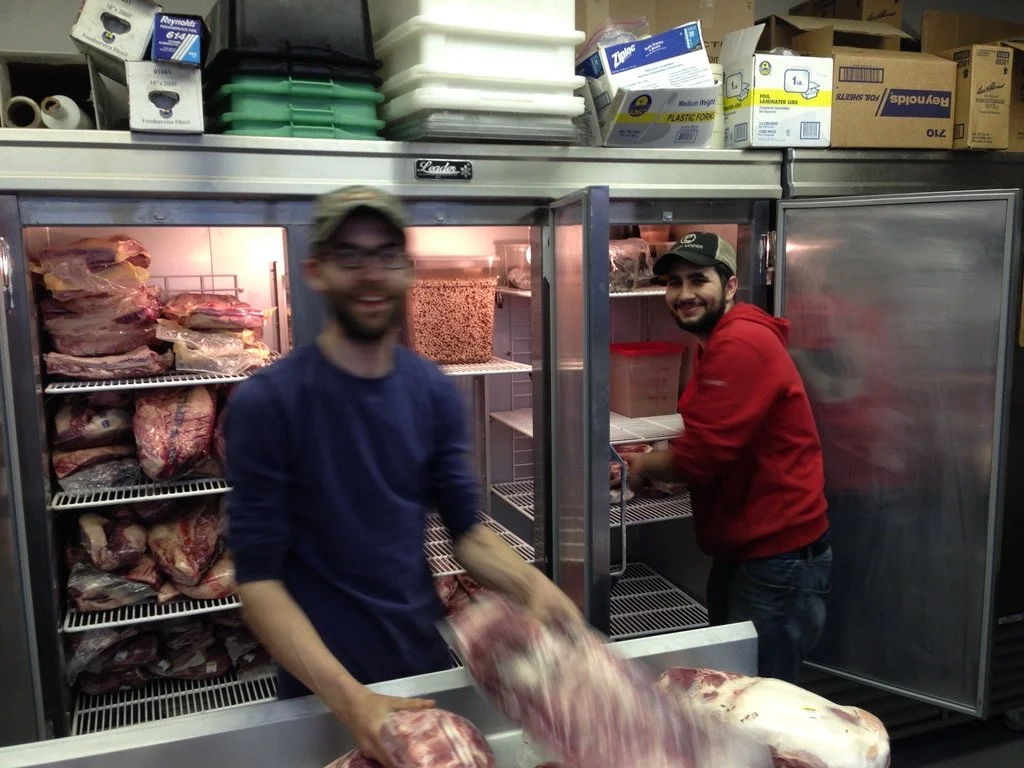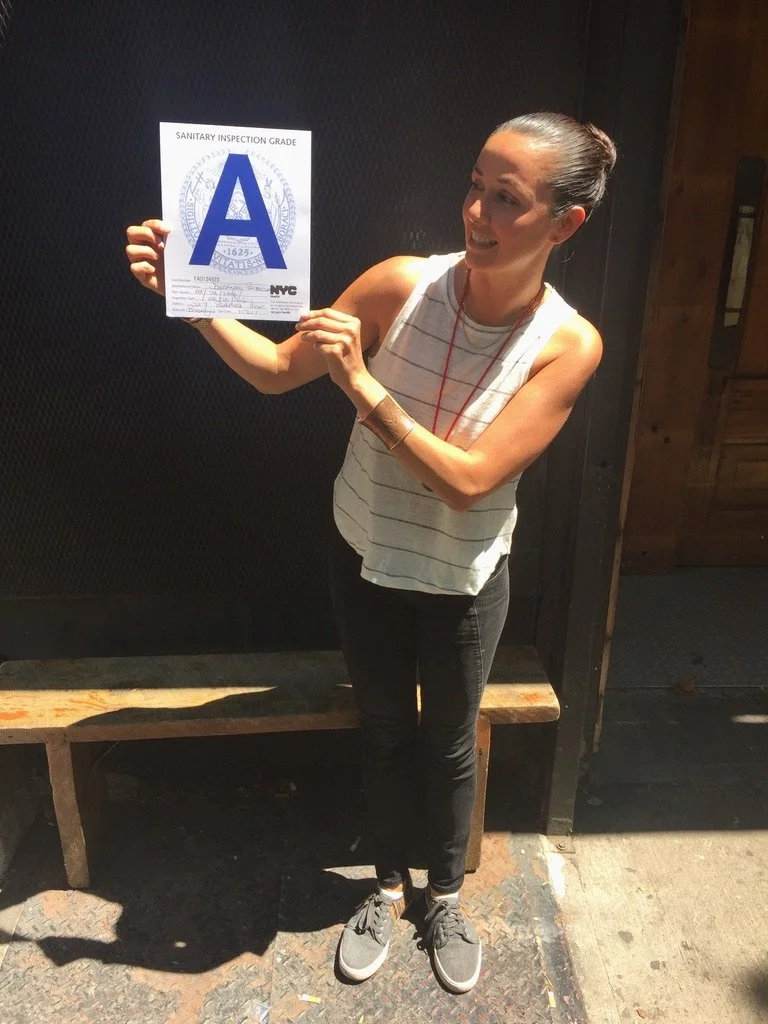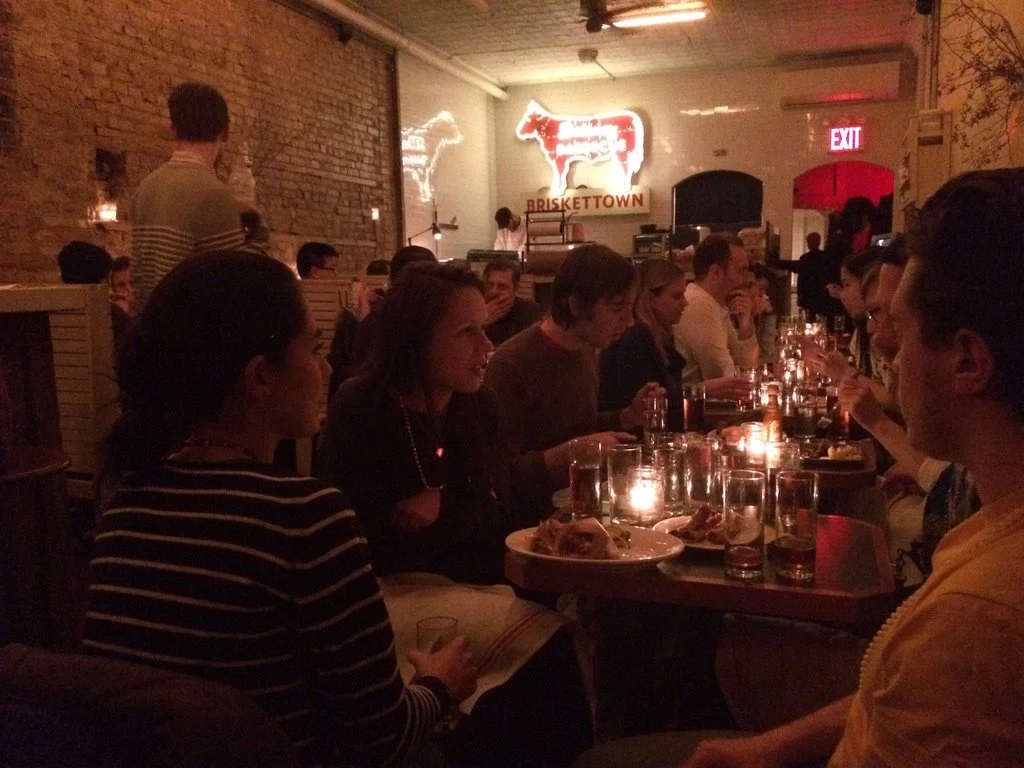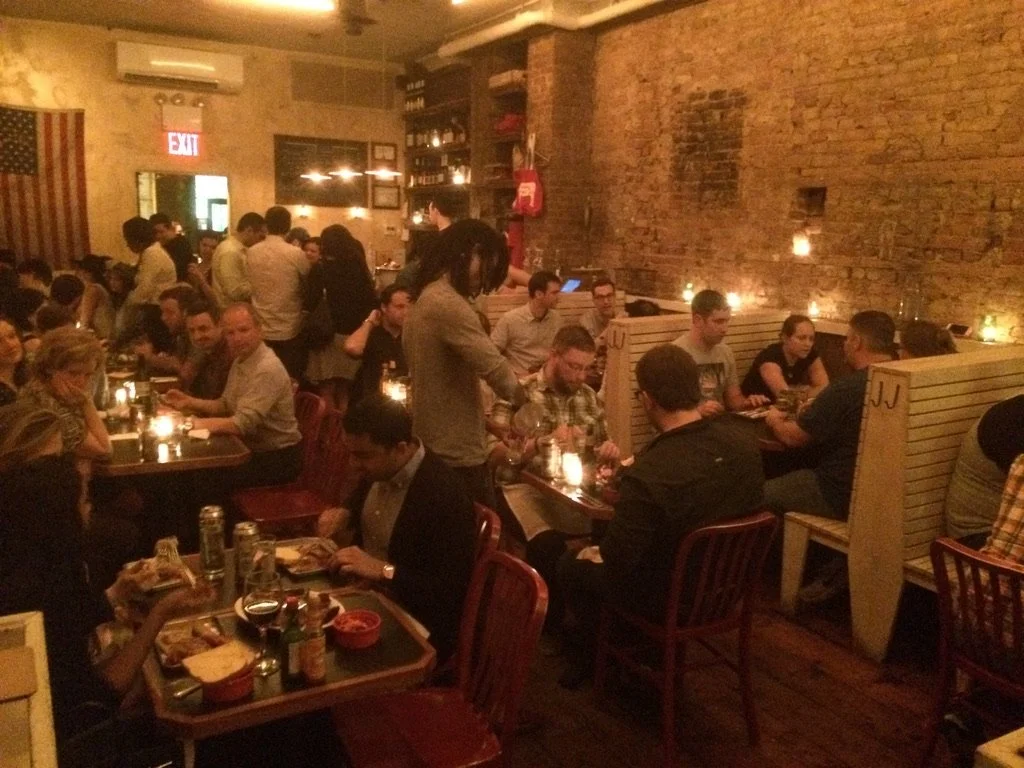
Restaurant:
BrisketTown
What: Full service barbecue restaurant
Where: Brooklyn, NY
When: 2012 - 2017
Overview
BrisketTown grew directly out of Brisket Lab, the experimental pop-up project I launched in 2012. What began as a summer-long “barbecue laboratory” evolved into a full-fledged restaurant — a natural next step after hundreds of New Yorkers had joined the experiment and helped us learn how to make better brisket. The success and enthusiasm of that project, combined with investor interest and public demand, pushed me to translate the idea into a permanent space.
Concept
The concept was simple but deeply intentional: Central Texas–style barbecue in Brooklyn. I wanted to bring the precision, reverence, and craft I’d experienced across the Texas Hill Country to New York City — meat by the pound, carved in front of you, wrapped in butcher paper, no frills.
When BrisketTown opened, the menu focused on the Texas Trinity: brisket, pork ribs, and house-made sausage, eventually expanding to include pulled pork and smoked turkey. Sides were few but refined — herb-laced coleslaw, a mustard seed–studded potato salad, later a mac and cheese and a wedge salad that brought a touch of modernity to the tradition.
The ambiance was designed to be sparse, intimate, and a little cinematic: candlelit tables, Delta blues playing softly, the glow of a white neon cow above the carving board. I wanted the space to feel like a workshop, not a theme park — a place where precision and craft took center stage.
Operations & Model
BrisketTown operated with a dual-kitchen system. Because our Bedford Avenue lease didn’t allow on-site cooking or ventilation, we built a commissary kitchen in the old Pfizer Building in Brooklyn. There, we smoked all meats on traditional offset pits fueled exclusively by post oak — cooked outdoors, rain or snow.
Food was transported daily to the restaurant in heated Cambro boxes, where it was held and sliced to order at the carving board. This system created a logistical dance — one team producing, another serving — that became both a strength and a structural challenge.
The restaurant itself was small, originally with only 21 seats before expanding to 35 after removing the service line and shifting to table service. Weekday sales were slow; weekends were slammed. The model struggled to balance production costs against the physical and temporal limitations of demand. Over time, we supplemented the restaurant’s income with catering, but the underlying math of running two teams in two spaces remained a constant tension.
Store Design & Atmosphere
BrisketTown’s design was conceived in collaboration with Home Studios of Brooklyn and built by Precision Innovations. The goal was to translate the warmth and austerity of Central Texas barbecue culture into a Brooklyn context — a space that felt earned, not themed.
The 34-seat dining room blended influences from both Texas and Brooklyn: floors of reclaimed church lumber, walls wrapped in wainscoting made from old redwood salvaged from rooftop water tanks, and signature red chairs that punctuated the palette. Every surface told a story of reuse and restraint.
Even the smallest details were treated as symbols — from the bleached beef rib–bone door handles, hand-whitened by one of our earliest team members, to the glowing white neon cow that anchored the room above the carving board.
The effect was moody and timeless: candlelight glinting off worn wood, Delta blues in the background, a dining room that felt simultaneously like a workshop and a chapel — a place that took barbecue seriously, but never itself too much.
Impact & Recognition
Despite those structural challenges, BrisketTown was a creative and cultural success. The restaurant received a James Beard Award nomination, earned me a spot on Zagat’s 30 Under 30, and was consistently featured among New York’s Best Restaurants lists from Time Out, Eater, and others.
Our guests — many of whom had backed Brisket Lab — became loyal advocates, and the sense of community we built around the restaurant was deeply personal. We called them “Brisketeers.” For them, it wasn’t just a restaurant; it was a continuation of a shared experiment in good food, made with purpose.
Reflections
BrisketTown taught me more than any other project about structure, sustainability, and the difference between momentum and foundation.
We built something people loved — press, guests, and staff alike — but it sat on an uneven base. Running a dual-space model meant we were constantly fighting inefficiency. We were creative problem-solvers, but the system itself wasn’t designed for long-term balance.
The big lesson: creativity needs structure. The magic of a brand, the buzz, the loyalty — all of that has to rest on a strong operational core. If you build on shaky ground, you operate on shaky ground. BrisketTown was my greatest teacher in that sense: a beautiful, imperfect structure that revealed the importance of strong foundations before scale.

